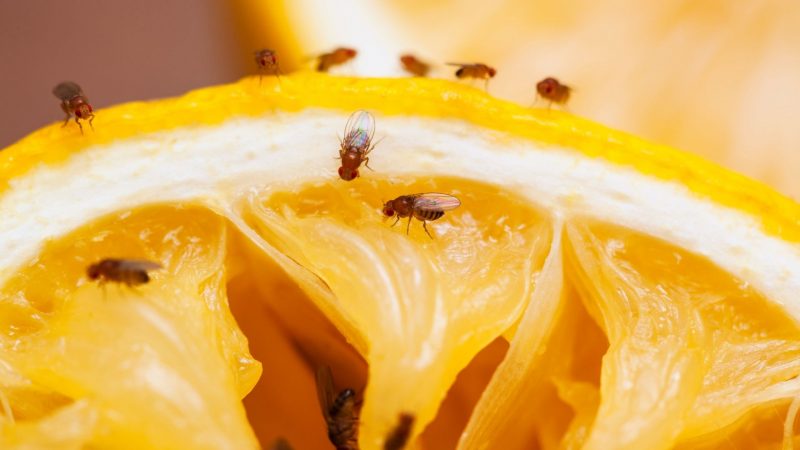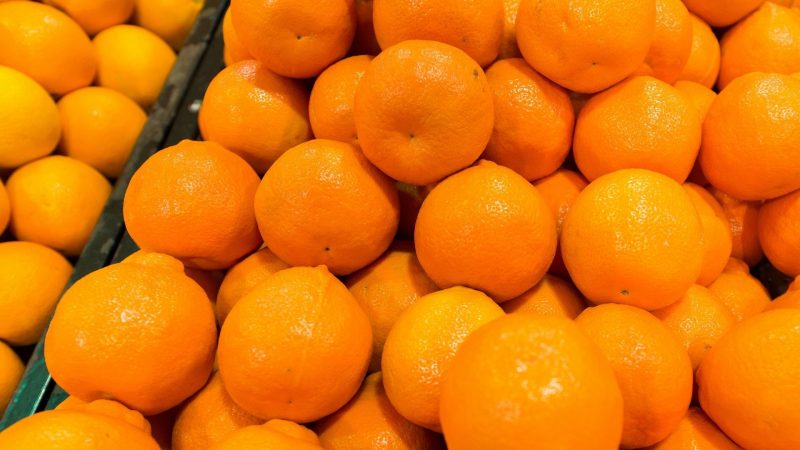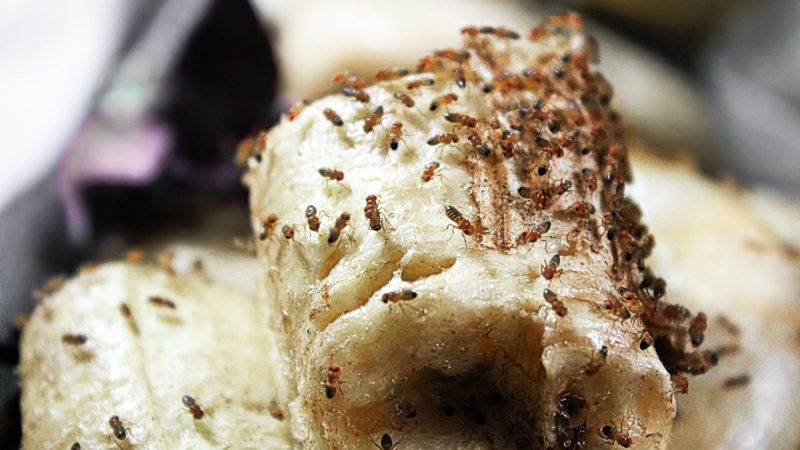Fruits are very nutritious, which is why most of us keep fruits readily available on a counter or dining table. But then, they also attract fruit flies, right? And no matter how many times you shoo them away, they will still come back.
Where do fruit flies come from? Overripe produce that has already been affected and brought inside the house can be the source of infestations. Poorly covered windows and doors allow them to fly in from the outside.
Just keep on reading to learn more interesting facts about these tiny insects!
What Exactly Are Fruit Flies?

Generally speaking, fruit flies are those tiny, flying insects that you see mostly in fruits. There are actually more than 4000 fruit fly species that are spread all over the world. However, the Drosophila melanogaster species is the one that is commonly referred to as fruit flies. Sometimes, they are also called vinegar flies.
Fruit flies are usually tan, brown, or yellow, depending on the species. They are quite small and can grow between 1/10 and 1/8 inches long only. Their abdomen is usually black on top, and the bottom side is gray. Typically, adult fruit flies have bright red eyes and a pair of long, hairy antenna that serves as sensor neurons.
How Can You Tell if a Fruit Fly Is Male or Female?
Fruit flies exhibit sexual dimorphism, which means there are several distinct characteristics between males and females. This is aside from the fact that their sex organs are obviously different from each other. Female fruit flies are quite smaller than males and can grow up to 2.5 mm (0.10 in) long only.
On the other hand, male fruit flies have darker backs than females and have a distinct black patch on their abdomen. However, the most obvious sign that a fruit fly is a male is if it has a sex comb, which appears to be a row of closely spaced bristles between their forelegs. Females don’t have it, though.
What Do Fruit Flies Eat?
As the name suggests, fruit flies love to eat fruits. However, it does not mean that fruits are their only source of food. In fact, they also love fermented items, including beer, wine, other forms of liquor, and even soda. In general, these fruit pests are very attracted to sugary and decaying organic food and materials.
What Attracts Fruit Flies?
Most overripe, rotting fruits and vegetables are what attract fruit flies. Fruit flies find the yeast and fungus that overripen fruits and vegetables particularly appetizing.
They are drawn to drains and garbage disposals. In essence, they are driven to wet conditions and food waste. Since fruit flies only consume food in surface contact, there is almost no possibility that you may consume these bugs.
Where Do Fruit Flies Come From?
Fruit flies can enter your home in a number of ways from the outside. They most frequently enter homes through open doors or windows, and they have even been known to ride on fruit or produce that homeowners have brought in from the supermarket.
They crammed themselves inside your house. Fruit flies are so small that they can easily fit through even the smallest gaps in walls or doors. As soon as they are inside, they will begin reproducing and producing eggs.
Where Do Fruit Flies Usually Stay?

Typically, fruit flies stay in fruits and are very attracted to the scent of ripened fruits and even vegetables. Once the fruit is fermenting, the fruit fly will punch the skin of the fruit and will lay their eggs inside. This is why you can see them flying in markets where fruits are being sold, fruit stands, and fruit gardens as well.
But no, these areas are not their only favorite places to stay. In fact, you can also see them in open garbage cans, cleaning supplies with residues such as mops, rags, and sponges, damp areas, attics, plumbing leaks, and wastewater systems. In short, they stay in wet, filthy areas where they can lay eggs and reproduce.
What Kind of Weather Fruit Flies Are Most Active?
The truth is, that fruit flies can be active all year round, so they are always present in any kind of weather. Nevertheless, they originate in Africa, which is the most tropical continent. Therefore, you expect them to love warm weather and locations. This is also why their population increased dramatically in the summer.
Nonetheless, fruit flies can also survive in the winter but are less active. They don’t die during colder months, but their population almost doesn’t increase. Also, their life span reduces if the temperature drops below 60°F (15.5 °C). So now, you will realize that fruit flies don’t follow the fruits you place inside the refrigerator.
How Long Do Fruit Flies Live?
Under optimal circumstances, a fruit fly can live for 40 to 50 days on average. They prefer warmer climates and are more prevalent throughout the summer.
Additionally, they thrive best at about 85 degrees Fahrenheit, which is also the ideal temperature for their reproduction. They may endure colder temperatures, but they mature more slowly and have a reduced chance of surviving.
What Causes Fruit Flies?
Fruit flies require fluids to keep them alive because they lack fangs. They are naturally drawn to sweet things found in nature since their brains can detect fermenting fruit from far away.
The main food sources for fruit flies are fruits, vegetables, wine, and fermented, decomposing organic materials. Therefore, just keeping these common, everyday goods in your home is like giving these pests a free pass to settle down and multiply.
Signs of Fruit Fly Infestation
There are actually two signs that fruit flies are infesting your home. The first sign is when lots of adult fruit flies fly around your house, even in places where there is no fruit. Again, these fruit pests love decaying matter or anything that had contact with fruits and sugary foods such as food wrappers.
Another sign of fruit fly infestation is when you see lots of mature larvae of fruit flies slowly crawling out of their breeding areas especially overripe or rotten fruits. In some cases, you might mistake them for cockroach droppings unless you take a closer look. If you cut open fruit and you see them, your house is in trouble.
How Can Fruit Flies Enter My House?

Fruit flies are tiny insects and are very fast, so they can easily enter your house even if you close your windows and doors. In fact, they can wiggle their way in very small openings such as small holes in windows, kitchen sinks, leaky roofs, and even wall cracks. They can also enter while you are opening the door.
Fruit flies are also great flyers and are excellent hitchhikers. Amazingly, an adult fruit fly can fly as far as 9 miles (14.5 kilometers) without resting! They beat their wings 200 times every second, and once they sense danger, they can rotate 90° in less than 50 milliseconds. No wonder you can hardly kill them by hand.
Why Are Fruit Flies So Many?

Fruit flies usually come in batches simply because they reproduce quickly and in large numbers. Believe it or not, a female fruit fly can lay about 500 eggs in her lifetime! An adult fruit fly can live to 40-50 days. And just like many other insects, fruit flies have four stages in their life cycle – egg, larvae, pupa, and adult.
As mentioned earlier, females usually lay their eggs inside a ripening fruit and can lay up to 20 eggs in a single sit. Each egg is yellowish and is only about ½ mm in length. After about 24 hours, the eggs will hatch into larvae. Sometimes, it may take the eggs 2-4 days to hatch, depending on the outside temperature.
Also called maggots, the larvae undergo three instar stages where they start to form their head, mouth, and spiracles. During this stage, they also carry bacteria which cause the fruit to rot and fall from the tree prematurely. Larvae also use this chance to feed themselves with nutrients in preparation for the pupa stage.
As the fruit falls to the ground, the white larvae have already finished molting, usually lasting 4-5 days. It’s also time for the mature larvae to leave the fruit and find a colder place. In most cases, pupation happens under the soil where the pupa is protected inside a cocoon until it becomes an adult.
During this stage, the pupa will grow folded wings, six legs, and a hard shell. About 24 hours before adulthood, the red eyes will also be visible. As the emerging adult prepares to leave the cocoon, the puparium will turn black. Nevertheless, a fully-grown adult will become lighter and elongated wings.
The egg and larval stages last for 8 days in ideal condition, while the pupa stage lasts for about 6 days. Interestingly, an adult fruit fly will become sexually mature in just 48 hours after it emerges from the puparium. And just like the males, females are polygamous and will have sex with several gentlemen.
Do Fruit Flies Have Benefits?
Fruit flies are pests and have caused great losses in the fruit industry worldwide. But while many farmers want to get rid of them, scientists have found them to be beneficial in conducting genetic research and studies. This is probably because humans and fruit flies share about 75% of the genes that can cause diseases.
Aside from that, fruit flies were also used as models in studies on wound repair and prevention of further infection. Recently, this hardworking pest has also been a favorite subject in other complex studies. This includes creating processes and development concerning memory, cognitive behavior, and learning studies.
Related: How Many Types of Fruit Flies Are There? | Information and Facts
When Are Fruit Flies a Problem?
These insects are attracted by the odor of ripening fruit and rotting vegetables. Although fruit flies can be a nuisance throughout the year, if food is plentiful, the summer and fall are often when they are most likely to be an indoor issue. They might, however, be an issue all year long.
List of Sources
Potter, M. (1994). Fruit Flies. University of Kentucky – College of Agriculture Food and Environment.
Fruit Flies. (2021). University of Maryland Extension.
An Introduction to Drosophila Melanogaster. The Berg Lab – University of Washington.
Fruit Flies Fact Sheet. Waltham Forest.
Tolwinski, N. (2017). Introduction: Drosophila – A Model System for Developmental Biology. National Center for Biotechnology Information, U.S. National Library of Medicine.
- Bed Bug Surge 2025: How to Detect, Prevent, and Safely Eliminate Infestations in Top U.S. Cities - June 18, 2025
- Asian Needle Ants Invade US Homes: 2025 Guide to Identification, Risks, and Effective Control - June 11, 2025
- New World Screwworm Alert: How US Livestock Owners Can Prevent Outbreaks and Protect Herds [Summer 2025 Update] - June 8, 2025

